Life
He was born in Huntly, Aberdeenshire, to James Shirreffs and his wife, Mary Wagrel, in 1846 and was baptised in the same parish on 14 April 1846.
He studied at Glasgow School of Art under William Mossman from 1870 to 1873 winning a free scholarship in 1872.
In 1877 he opened his own studio at 108 West Regent Street and in 1887 opened his own foundry at 261 West George Street, probably with his brother, Charles Gordon Shirreffs (1857-1913), who was a brass-founder.
His bronze and copper-work are considerably more refined than his stone carving.
He worked closely with the architect J J Burnet on several projects. He also did co-operative works with other sculptors such as Sir George Frampton, John Rhind and Pittendreigh MacGillivray.
He exhibited at the Royal Academy in London in 1896.
For the Kelvingrove Art Gallery he visited Paris with Frampton to study sculpture on contemporary French buildings and the French influence can clearly be seen. [1]
He died at his home, Lochwinnoch in Paisley on 23 June 1902 and is buried in Glasgow's Western Necropolis.

Sir John Robert Steell was a Scottish sculptor. He modelled many of the leading figures of Scottish history and culture, and is best known for a number of sculptures displayed in Edinburgh, including the statue of Sir Walter Scott at the base of the Scott Monument.

The Scott Monument is a Victorian Gothic monument to Scottish author Sir Walter Scott. It is the second largest monument to a writer in the world after the José Martí monument in Havana. It stands in Princes Street Gardens in Edinburgh, opposite the former Jenners building on Princes Street and near Edinburgh Waverley Railway Station, which is named after Scott's Waverley novels.

James Pittendrigh MacGillivray was a Scottish sculptor. He was also a keen artist, musician and poet. He was born in Inverurie, Aberdeenshire, the son of a sculptor, and studied under William Brodie and John Mossman. His works include public statues of Robert Burns in Irvine, Lord Byron in Aberdeen, the 3rd Marquess of Bute in Cardiff, John Knox in Edinburgh's St Giles Cathedral, and William Ewart Gladstone in Coates Crescent Gardens, Edinburgh.

William Chambers of Glenormiston was a Scottish publisher and politician, the brother of Robert Chambers. The brothers were influential in the mid-19th century, in both scientific and political circles.
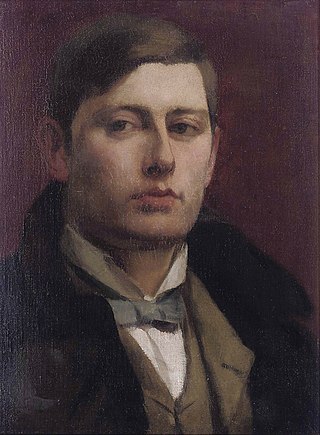
Sir George James Frampton, was a British sculptor. He was a leading member of the New Sculpture movement in his early career when he created sculptures with elements of Art Nouveau and Symbolism, often combining different materials such as marble and bronze in a single piece. While his later works were more traditional in style, Frampton had a prolific career in which he created many notable public monuments, including several statues of Queen Victoria and later, after World War I, a number of war memorials. These included the Edith Cavell Memorial in London, which, along with the Peter Pan statue in Kensington Gardens are possibly Frampton's best known works.
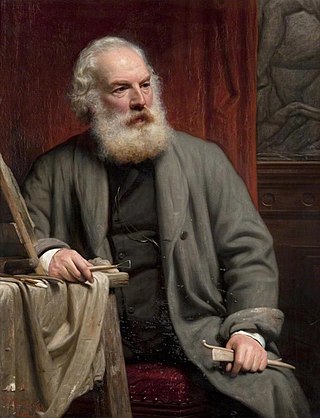
John G. Mossman was one of a number of English sculptors who dominated the production and teaching of sculpture in Glasgow for 50 years after his arrival with his father and brothers from his native London in 1828. His father William Mossman (1793–1851) was also a sculptor, and a pupil of Sir Francis Chantrey. He was trained both by his father and under Carlo Marochetti in London.
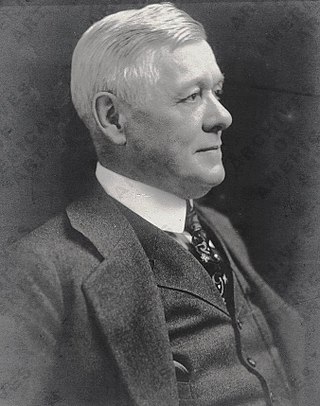
John Massey Rhind was a Scottish-American sculptor. Among Rhind's better known works is the marble statue of Dr. Crawford W. Long located in the National Statuary Hall Collection in Washington D.C. (1926).
William Birnie Rhind RSA (1853–1933) was a Scottish sculptor.

John RhindARSA (1828–1892) was a Scottish sculptor, based in Edinburgh. He was born in Banff the son of a master mason. He was trained under Alexander Handyside Ritchie (1804–1870). He served this apprenticeship in a yard at 4 East Broughton Place.

Robert Forrest was a Scottish monumental sculptor, receiving many important commissions in the early 19th century.
Archibald C. Dawson ARSA was a Scottish sculptor, specialising in architectural carving. Two of his most noteworthy works include wood and stone carvings for the University of Glasgow Memorial Chapel and sculptures for the Russell Institute in Paisley, featuring images of his wife and two sons.
Alexander Handyside Ritchie was a Scottish sculptor born in Musselburgh in 1804, the son of James Ritchie, a local brickmaker and ornamental plasterer, and his wife Euphemia. The father in turn was the son of a fisherman and amateur sculptor.
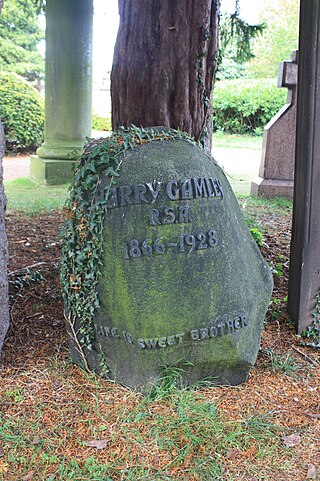
Henry Snell Gamley (1865–1928) was a Scottish sculptor specialising in war memorials and sculpture on tombs. He was however also responsible for other figurative sculpture on prominent Edinburgh buildings such as the Usher Hall and works at Holyrood Palace.

Patric Park was a Scottish sculptor.
William Kellock Brown was a Scottish sculptor prominent in late Victorian Glasgow, with many public works. His brother was the landscape artist Alexander Kellock Brown. He exhibited at the Royal Academy and Royal Scottish Academy. His sculptures are frequently simply initialled WKB. He was commissioned to create several Scottish war memorials in the early 1920s. He received an important commission from Glasgow Corporation in 1905–06, adding ornament to several public libraries in the city.
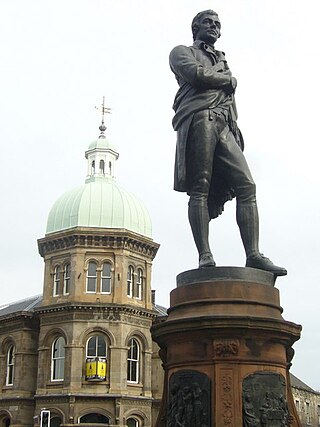
David Watson Stephenson was a Scottish sculptor, executing portraits and monuments in marble and bronze.

James Fillans was a Scottish sculptor, poet and artist with a short but influential career in the early 19th century.
William Mossman was a Scottish sculptor operational in the early 19th century, and father to three sculptor sons.

Stewart McGlashan or McGlashen (1807–1873) was a Scottish sculptor and mason, responsible for creating the company Stewart McGlashen (sic) which flourished from 1842 to 1974. He was responsible for devising a series of machines capable of creating highly polished granite for the first time, and capable of carving intricate designs accurately and fast. At his time he was not held in high esteem by sculptors who saw him as undermining their artistry. Despite not being "hand-carved" the artistry value of his work is exceptionally high.

Alexander McDonald, M'Donald or MacDonald was a Scottish sculptor specialising in granite. He was also an expert on Egyptian granite sculpture.
This page is based on this
Wikipedia article Text is available under the
CC BY-SA 4.0 license; additional terms may apply.
Images, videos and audio are available under their respective licenses.
















